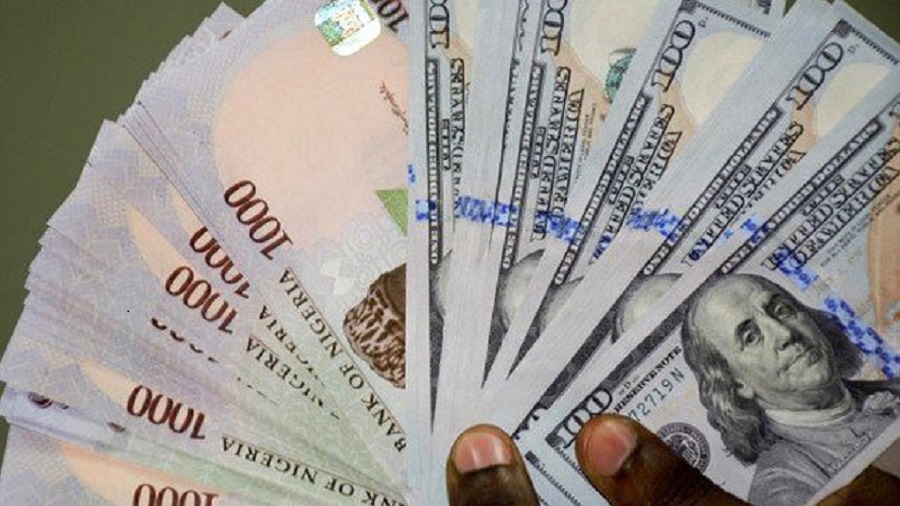The exchange rate at the parallel market suffered its second depreciation of the year.

On January 11, 2021, the exchange rate between the naira and dollar at the black market closed at N475/$1 representing a N3 drop when compared to the N472/$1 it closed on the previous trading day
of January 8th, 2021.This is the second depreciation of the naira this year after falling to N472/$1 on Friday, January 8th 2021. The naira traded at N470/$1 for almost 2 weeks since the 29th of December 2020.
The pressure experienced at the black market is attributed to a surge in demand as holidaymakers source for forex to return back to their bases abroad. Parents of Nigerian pupils whose school abroad has also increased the demand for forex to fund their tuition and allowances. This is likely to sustain demand pressure at the black market which has been a major source of price discovery for the foreign exchange market.
At the NAFEX (I&E Window) where forex is traded officially, the exchange rate closed at N393.33/$1, a slight appreciation from the N393.50 recorded on the previous trading day, January 8, 2021.
Nairametrics understands that the drop in dollar supply is occurring at the same time there was a price increase on Monday, sustaining the previous trading day’s increase. The exchange rate at the I&E window has held steady despite the major depreciation on the last day of trading in 2020 when it closed at N410/$1.
The exchange rate disparity between the parallel market and the official market widened again to N81.67, representing a 17.2% devaluation differential.
NAFEX
The Naira appreciated against the dollar at the Investors and Exporters (I&E) window on Monday, closing at N393.33/$1 as against N393.50 reported on January 8, 2021.
- This represents a 17 kobo gain when compared with that of the previous trading day.
- The opening indicative rate was N393.69 to a dollar on Monday. This represents a 20 kobo loss when compared to the N393.49 that was recorded on Friday, January 8, 2021.
- The N411 to a dollar was the highest rate during intra-day trading before, it still closed at N393.33 to a dollar. It also sold for as low as N350.27/$1 during intra-day trading.
- Forex turnover: Forex turnover at the Investor and Exporters (I&E) window declined by 6% on Monday, January 11, 2021.
- According to the data tracked by Nairametrics from FMDQ, forex turnover dropped from $65.63 million on Friday, January 8, 2021, to $61.73 million on Monday, January 11, 2021.
- The average daily forex sale for last week was about $169.93 million, which represents a huge increase from the $34.5 million that was recorded the previous week.
- The exchange rate is still being affected by low oil prices, dollar scarcity, a backlog of forex demand, and a shaky economy that has been hit by the coronavirus pandemic.
Forex turnover still tepid
Business activities commenced fully on Monday, January 11th as most businesses returned to work from the Christmas and New Year break.
- Total forex turnover in the first 6 days of trading this year is $235 million compared to $235.75 million traded on the last day of the year in 2020.
- However, increased demand is expected in the coming days as exporters strive to fulfill letters of credit obligations through their local banks.
- For now, the CBN appears committed to keeping the exchange rate below N400/$1 but its resolve will be tested in the coming days as demand pressure resumes.
- Analysts who spoke to Nairametrics believe demand for forex will rise significantly in the first quarter of 2021 as businesses pay for technical and other services, service foreign currency loans, repatriate sales proceeds and dividends.
- The CBN will also be relying heavily on proceeds from Nigeria’s crude oil to shore up its external reserves while betting on its policy on diaspora remittances to provide liquidity at the retail end of the market.
Note: Nairametrics Research references its parallel market rates from various traders and also references websites such as Aboki FX. The rates you buy and sell forex might be different from what is published here.




No comments :
Post a Comment